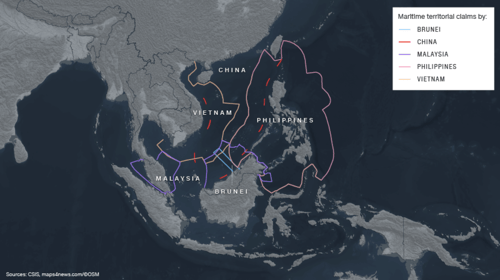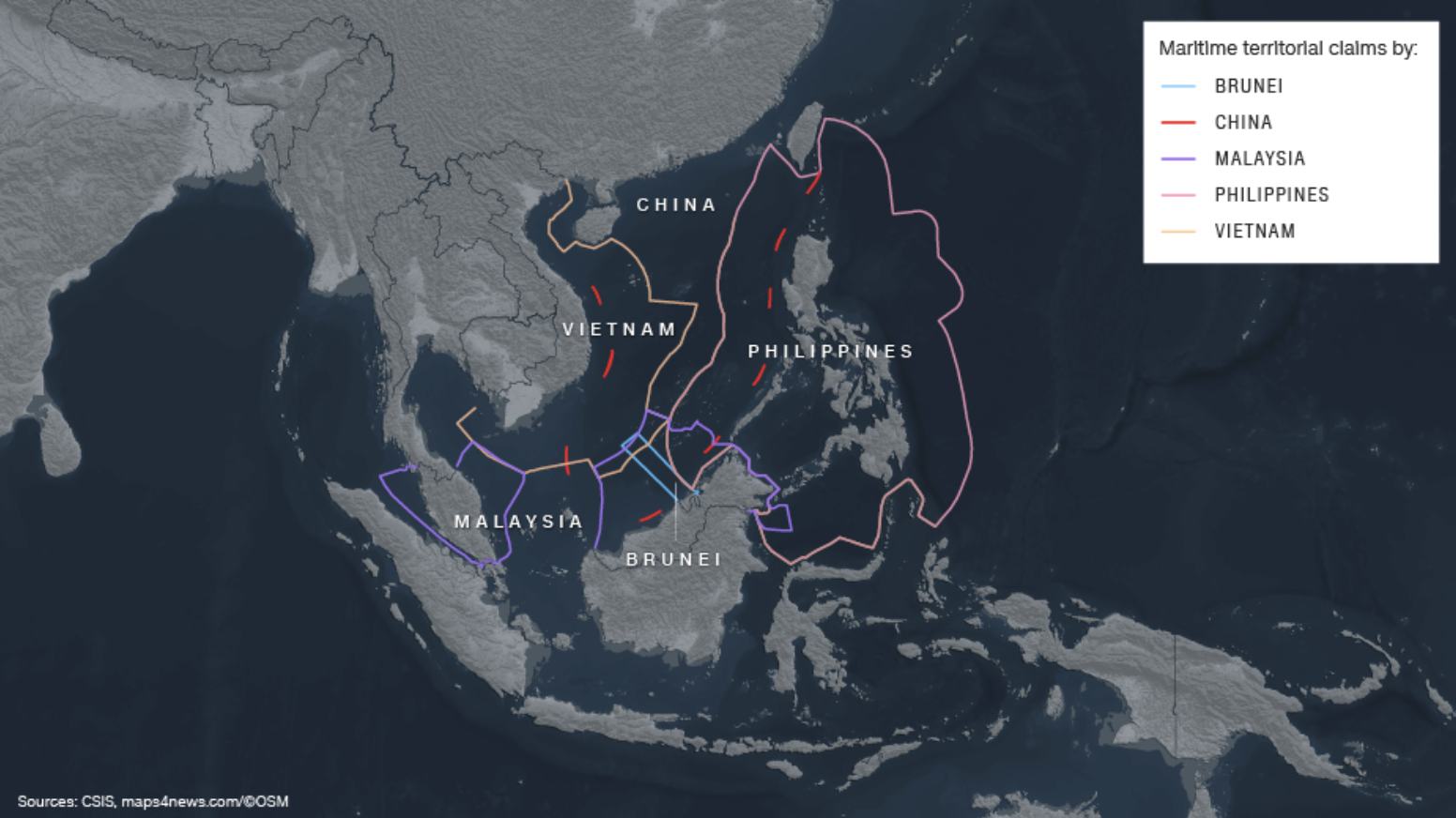Dryad Global analysts James Welsh and Dorottya Zsiboracs on China's influence within the South China Sea.
The South China Sea (SCS) is a key region for Chinese power projection and territorial ambition. However, China’s bullish behaviour in the SCS masks its vital economic need for sustained diplomacy in the region.

As a crucial region in global trade, both the likelihood and commercial impacts of conflict in the SCS is a troubling long term projection for analysts and shipping companies alike. Tensions in the SCS are a multilateral issue with multiple claimants to territory, including Brunei, China, Indonesia, Malaysia, the Philippines, Taiwan, and Vietnam. Japan, South Korea, Australia, and the United States also have geo- strategic interests that will continue to influence the region’s future. The multilateralism of the region makes a resolution of territorial claims difficult, and tensions will likely continue to fluctuate in the coming months and years.
However, conflict and disruption to trade is not in the interest of any key claimants, particularly China, 40% of China’s trade, and 60% of oil imports flow through the SCS to Chinese ports. In the short term, the multipolarity of the SCS is likely to provide an element of stability. Vessels which actively seek to challenge China’s claim to the archipelagos within the SCS are at greatest risk of Chinese intimidation, as demonstrated in incidents involving Filipino and Vietnamese trawlers fishing in the contested waters within China’s ‘9-dash line’.
The Chinese ‘Maritime Militia’ operate as an unattributable source of intimidation, ramming and sinking vessels that operate in proximity to China’s claimed territory. The maritime militia contributes to China’s ‘Cabbage Strategy’, where vessels are placed in a ‘layer-like’ formation around the islands of contention, denying access to waters and gradually shifting the status-quo of control. Militia fleets have little to no interaction with commercial vessels because of their proximity to militarised archipelagos and subsequent distance from shipping lanes. Consequently, the risk to commercial shipping is unlikely to increase.





